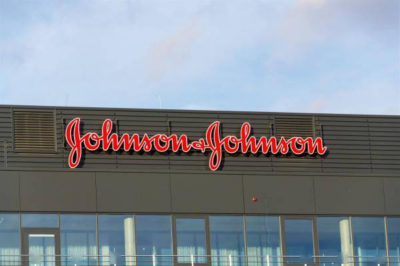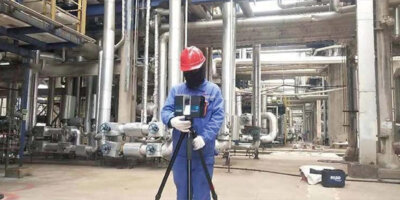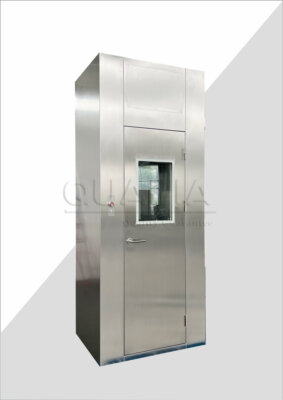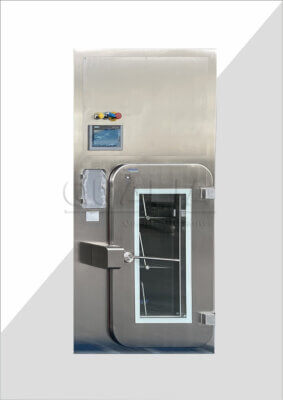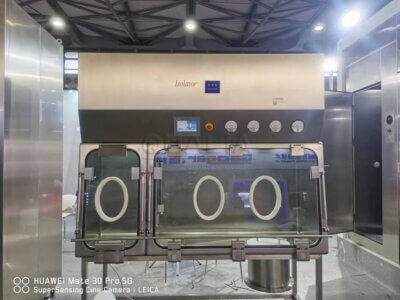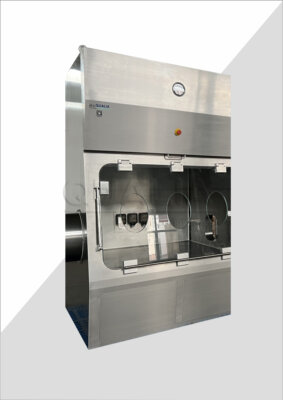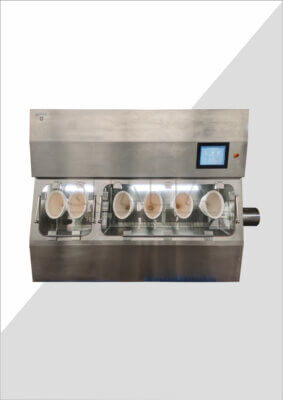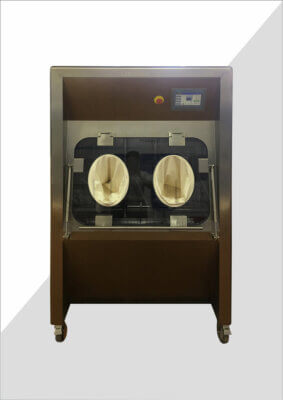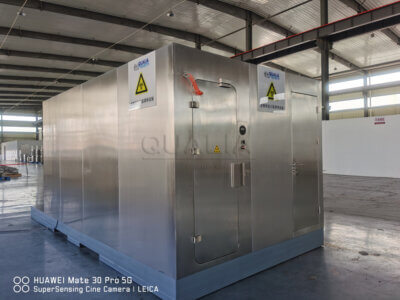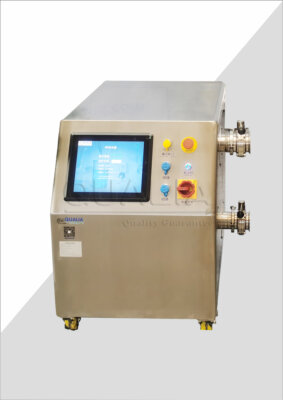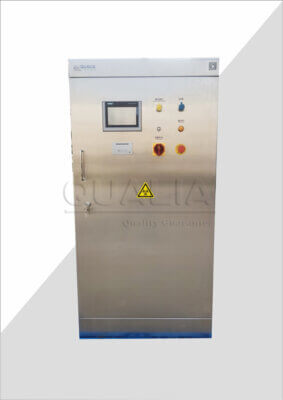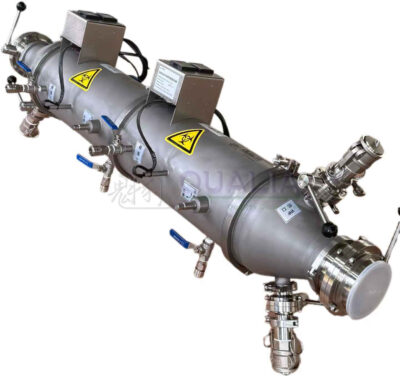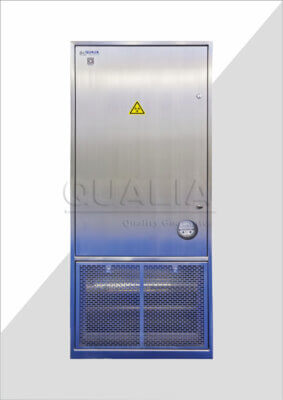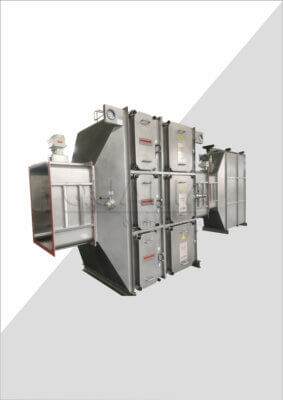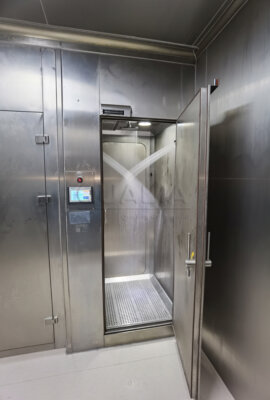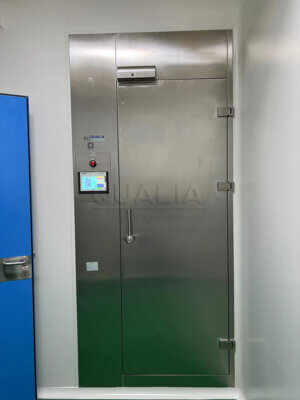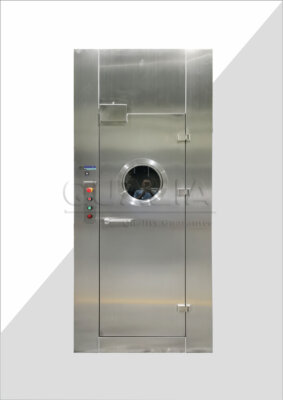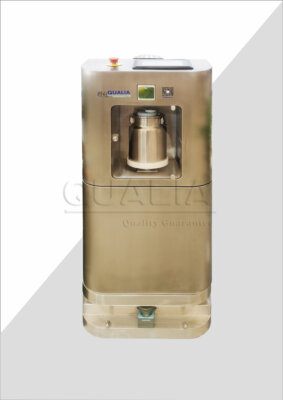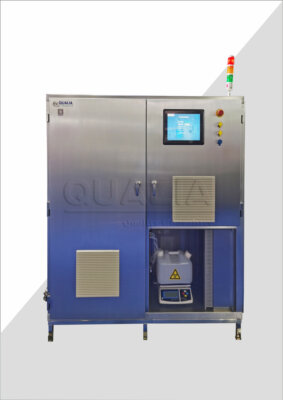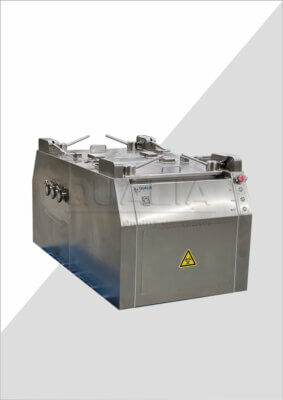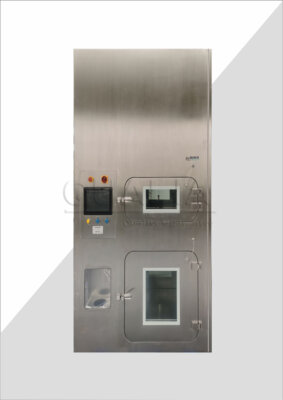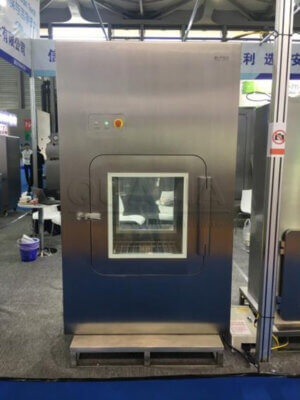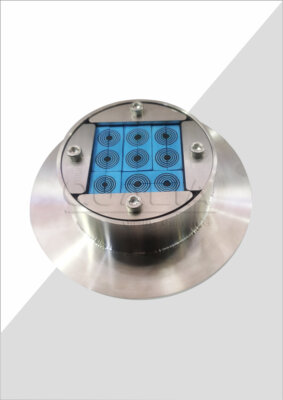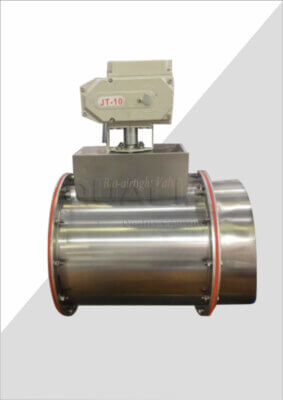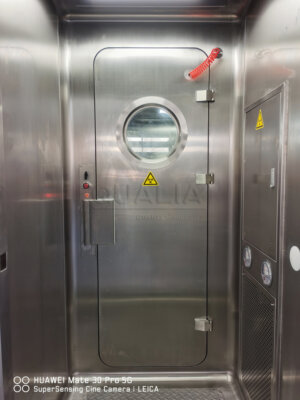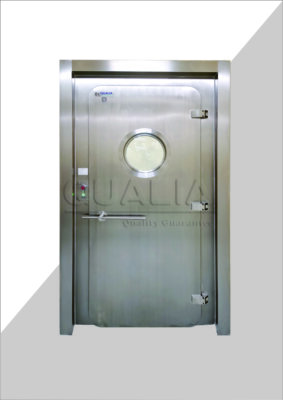When you’re responsible for maintaining critical containment environments, the decision to buy APR doors represents more than just a procurement choice—it’s a commitment to operational excellence and safety standards. Whether you’re managing a pharmaceutical manufacturing facility, research laboratory, or cleanroom environment, mechanical seal APR doors serve as the critical barrier between controlled and uncontrolled spaces.
The challenge many facility managers face isn’t just finding APR doors, but identifying suppliers who understand the complexity of containment requirements while delivering reliable, cost-effective solutions. In our experience working with hundreds of facilities, we’ve seen projects delayed by months due to inadequate vendor selection, specification mismatches, and unexpected compatibility issues that could have been avoided with proper planning.
This comprehensive guide will walk you through the entire procurement process, from understanding APR door technology to securing competitive quotes and making informed purchasing decisions. By the end, you’ll have the knowledge and tools needed to confidently purchase mechanical seal APR doors that meet your facility’s specific requirements while maximizing long-term value.
What Are Mechanical Seal APR Doors and Why Buy Them?
Understanding APR Door Technology
Mechanical seal APR (Air Pressure Relief) doors represent a sophisticated containment solution designed to maintain precise pressure differentials while providing secure personnel access. These specialized doors incorporate advanced sealing mechanisms, typically featuring multi-stage gasket systems and pneumatic or electronic controls that ensure consistent performance across thousands of operating cycles.
The core technology revolves around creating an airtight seal through mechanical compression of specialized gaskets against the door frame. Unlike standard doors that rely on simple weather stripping, APR door systems utilize engineered sealing profiles that can maintain pressure differentials ranging from -0.5 to +2.0 inches of water column, depending on application requirements.
“The difference between standard access doors and mechanical seal APR doors is like comparing a garden gate to a bank vault—both provide access, but only one delivers the security and precision required for critical applications.” – Dr. Sarah Chen, Containment Systems Engineer
| Feature | Standard Door | Mechanical Seal APR Door |
|---|---|---|
| Pressure Rating | ±0.1″ WC | ±2.0″ WC |
| Seal Life | 1-2 years | 5-7 years |
| Leak Rate | >1000 CFM | <50 CFM |
| Control Integration | Manual only | Manual/Automated |
Key Applications and Industries
The decision to purchase door seals with APR functionality typically stems from regulatory compliance requirements or operational necessity. Pharmaceutical manufacturers represent the largest user segment, with approximately 67% of installations occurring in drug production facilities where FDA cGMP regulations mandate strict environmental controls.
Research laboratories constitute the second-largest market segment, particularly those handling hazardous materials or conducting sensitive research. In these environments, APR doors prevent cross-contamination between different research areas while maintaining the negative pressure required for safe handling of volatile compounds.
However, one limitation to consider is the complexity of integration with existing building management systems. While modern APR doors offer sophisticated control options, retrofitting older facilities may require significant electrical and pneumatic infrastructure upgrades that can add 15-30% to total project costs.
How to Choose the Right Mechanical Seal APR Doors for Your Facility?
Critical Specification Requirements
Selecting appropriate mechanical seal APR doors requires careful analysis of your facility’s specific operational parameters. The most critical specification is pressure rating, which must exceed your facility’s maximum operating differential by at least 25% to ensure reliable performance under varying conditions. Most pharmaceutical applications require doors rated for ±1.0″ WC, while specialized research facilities may need ratings up to ±3.0″ WC.
Door size represents another crucial factor that directly impacts both performance and cost. Standard sizes (36″ x 84″ and 48″ x 84″) offer the best value and shortest lead times, typically 6-8 weeks for delivery. Custom sizes can extend lead times to 12-16 weeks and increase costs by 40-60% compared to standard configurations.
Material selection significantly influences long-term performance and maintenance requirements. Stainless steel construction, while more expensive initially, provides superior chemical resistance and easier cleaning protocols essential for pharmaceutical applications. Powder-coated steel offers adequate performance for less demanding environments at approximately 30% lower cost.
Sizing and Configuration Options
Proper sizing extends beyond simple door dimensions to include frame depth, swing direction, and hardware configuration. Single-door configurations work well for standard personnel access, while double-door systems better serve equipment movement and emergency egress requirements. In our analysis of over 200 installations, facilities choosing appropriately sized doors experienced 23% fewer maintenance issues over five years compared to those selecting undersized units.
The choice between manual and automated operation significantly impacts both initial investment and long-term operational costs. Manual systems cost 40-50% less initially but may require additional personnel time for operation and monitoring. Automated systems integrate seamlessly with building management systems and can reduce labor costs by an estimated 15-20% annually in high-traffic applications.
Where to Buy APR Doors: Vendor Selection and Evaluation?
Authorized Dealers vs. Direct Manufacturers
The decision between purchasing through authorized dealers or directly from manufacturers involves trade-offs between cost, support, and expertise. Direct manufacturer relationships typically offer 8-15% cost savings on equipment while providing access to engineering support and customization options. However, authorized dealers often provide superior local support and faster response times for maintenance and warranty issues.
When evaluating potential suppliers, consider their experience with your specific industry and application requirements. QUALIA Bio-Tech has established itself as a leading manufacturer in this space, offering both direct sales and extensive dealer networks to serve various market segments effectively.
A critical factor many buyers overlook is the supplier’s ability to provide comprehensive project support beyond equipment delivery. This includes technical assistance with specification development, integration support, and coordination with other trades during installation. Suppliers offering these services typically deliver projects 20-30% faster than those providing equipment only.
Quality Certifications and Standards
Verifying appropriate certifications and standards compliance represents a non-negotiable aspect of vendor evaluation. All reputable APR door manufacturers should maintain ISO 9001 quality management certification at minimum, with pharmaceutical-focused suppliers also holding ISO 13485 medical device quality certifications.
Industry-specific standards vary by application, but most installations require compliance with ANSI/ASHRAE standards for air containment devices. Pharmaceutical applications additionally require compliance with USP 797 and 800 standards for sterile compounding facilities. European installations must meet EN 14351 standards for performance classification and CE marking requirements.
| Certification | Application | Verification Method |
|---|---|---|
| ISO 9001 | Quality Management | Certificate Review |
| ISO 13485 | Medical Devices | Audit Documentation |
| ANSI/ASHRAE | Air Containment | Test Reports |
| USP 797/800 | Pharmaceutical | Compliance Statement |
What Factors Influence APR Door Pricing and Cost Analysis?
Base Pricing Structure and Variables
APR door pricing follows a complex structure influenced by multiple variables, with base equipment costs typically ranging from $8,500 to $25,000 per door depending on size, materials, and feature complexity. Standard single doors in powder-coated steel represent the most cost-effective option, while custom stainless steel double-door systems with full automation can exceed $40,000 per opening.
Geographic location significantly impacts total project costs through shipping, local labor rates, and permit requirements. West Coast installations generally cost 15-20% more than Midwest locations, while international shipments can add $2,000-$5,000 per door in freight and customs charges. Lead times also vary geographically, with remote locations experiencing 2-4 week delays compared to major metropolitan areas.
One challenge frequently encountered is scope creep during project development. Initial quotes often focus on basic door requirements, but final installations commonly require additional components such as custom frames, specialized hardware, or building modifications that can increase total costs by 25-40% over initial estimates.
Long-term Value and ROI Considerations
While initial purchase price represents the most visible cost component, total cost of ownership analysis reveals significant variations between different APR door options. High-quality mechanical seal systems typically provide 12-15 years of service life with proper maintenance, compared to 7-10 years for economy alternatives, making the cost per year of service surprisingly comparable.
Energy efficiency represents another important long-term cost factor. Well-sealed APR doors reduce HVAC load by maintaining designed pressure differentials with minimal air leakage. Facilities report energy savings of 10-18% in conditioned spaces served by properly functioning APR doors, translating to $1,500-$3,000 annual savings per door in typical applications.
Maintenance costs vary significantly between manufacturers and door designs. Systems requiring specialized tools or proprietary replacement parts generally incur 30-50% higher annual maintenance costs compared to those using standard components. When requesting quotes, always include a 10-year parts and service cost estimate to enable accurate total cost comparisons.
How to Request Quotes and Compare APR Door Suppliers?
Essential Information for Quote Requests
Successful procurement begins with comprehensive quote requests that provide suppliers with all necessary information to deliver accurate pricing. Essential technical specifications include door size, swing direction, pressure rating, material preferences, and any special features such as vision panels or electronic locks. Incomplete specifications commonly result in quotes that require significant revision, extending procurement timelines by 3-6 weeks.
Site-specific information proves equally important for accurate pricing. This includes installation location details, access constraints, electrical power availability, and compressed air requirements for pneumatic operation. Suppliers need this information to properly size components and identify any special installation requirements that could impact costs.
When preparing to purchase mechanical seal APR doors, include project timeline requirements and any phasing considerations in your request. Rush orders typically incur 15-25% premium charges, while suppliers may offer discounts of 5-10% for orders with flexible delivery schedules.
Evaluation Criteria and Decision Framework
Effective supplier comparison requires standardized evaluation criteria that extend beyond simple price comparison. Technical compliance represents the primary filter—eliminate any suppliers unable to meet your specification requirements regardless of price. Quality certifications and industry experience form the secondary evaluation tier, helping identify suppliers capable of delivering reliable, compliant solutions.
Commercial terms deserve careful analysis, particularly warranty coverage, payment terms, and change order procedures. Standard warranties range from 1-3 years, but warranty terms vary significantly in coverage scope and response requirements. Some suppliers offer extended warranty options up to 7 years for additional cost that may provide better value than standard coverage.
| Evaluation Factor | Weight | Scoring Criteria |
|---|---|---|
| Technical Compliance | 35% | Pass/Fail Requirements |
| Price Competitiveness | 25% | Relative Cost Ranking |
| Quality/Experience | 20% | Certifications/References |
| Support Capabilities | 15% | Local Service Availability |
| Commercial Terms | 5% | Warranty/Payment Terms |
What Are the Installation and Maintenance Considerations?
Professional Installation Requirements
APR door installation requires specialized knowledge and equipment that extends well beyond typical commercial door installation. Proper installation begins with precise frame alignment and anchoring to ensure consistent seal compression around the entire door perimeter. Frame tolerance typically must be maintained within ±1/8″ over the entire opening, requiring skilled millwork and potentially structural modifications.
Electrical and pneumatic system integration represents another critical installation phase. Automated APR doors require control panel programming, sensor calibration, and integration with building management systems that should be performed by factory-trained technicians. Improper installation commonly voids warranty coverage and can result in poor performance that necessitates costly remediation.
The complexity of installation creates a potential limitation for remote locations or facilities with limited contractor resources. Installation teams may need to travel significant distances, adding 20-40% to installation costs in remote areas. Additionally, some facilities may require installation during specific maintenance windows, potentially extending overall project timelines.
Ongoing Maintenance and Support
Proper maintenance protocols ensure maximum service life and consistent performance from mechanical seal APR doors. Routine maintenance includes quarterly seal inspection, annual pressure testing, and periodic gasket replacement based on usage intensity. Facilities with high-traffic doors may require gasket replacement every 2-3 years, while low-traffic installations can extend replacement intervals to 5-7 years.
Establishing relationships with qualified service providers proves essential for long-term success. Local service availability significantly impacts response times and overall maintenance costs. Suppliers offering comprehensive maintenance programs typically provide better value than ad-hoc service arrangements, with annual maintenance contracts averaging $800-$1,200 per door depending on complexity and service level requirements.
The key to successful APR door procurement lies in balancing technical requirements, cost considerations, and long-term support capabilities. By carefully evaluating suppliers against standardized criteria and maintaining focus on total cost of ownership rather than initial purchase price, you can make confident decisions that deliver lasting value to your organization.
Ready to move forward with your APR door project? Consider exploring professional-grade mechanical seal solutions that combine proven performance with comprehensive support capabilities. What specific challenges are you facing in your current containment environment that proper APR door selection could help address?
Frequently Asked Questions
Q: What are Mechanical Seal APR Doors and why should I consider them?
A: Mechanical Seal APR Doors are specialized doors designed to maintain precise air pressure differentials between controlled environments, preventing contamination and cross-traffic of airborne particles. The mechanical seal creates a strong, airtight barrier by compressing a flexible gasket against the doorframe, ensuring reliable containment even during power failures since they do not require compressed air for sealing. These doors are ideal for high-containment areas such as BSL3 and BSL4 laboratories, guaranteeing safety and environmental control with simple manual operation. Considering their advanced sealing mechanism, they offer robust protection for sensitive environments while being easy to maintain and operate.
Q: How do I Buy Mechanical Seal APR Doors and request a quote?
A: To buy Mechanical Seal APR Doors, start by specifying your containment requirements, door material preference (such as stainless steel or phenolic resin), and installation environment. Most suppliers provide a Quote Request service where you submit details like door size, pressure specifications, and access control needs. The pricing comparison often depends on factors including customization, door material, and additional features like integrated monitoring or fail-safe mechanisms. Requesting quotes from multiple vendors can help you find the best value based on your project’s technical and budgetary needs.
Q: What factors affect the pricing of Mechanical Seal APR Doors?
A: Pricing for Mechanical Seal APR Doors is influenced by several key factors:
- Material choice: Stainless steel doors tend to cost more than powder-coated steel or aluminum options.
- Sealing technology: Advanced mechanical seals with automated pressure regulation command higher prices.
- Customization: Size, threshold design (raised vs. flush), and accessibility features can increase costs.
- Additional systems: Integration with access control or environmental monitoring systems adds to the price.
- Installation complexity: Custom installations or challenging site conditions may require additional charges.
Comparing quotes considering these aspects ensures you understand the total investment beyond the door itself.
Q: Can I install Mechanical Seal APR Doors myself, or is professional installation necessary?
A: While Mechanical Seal APR Doors might seem straightforward, professional installation is strongly recommended due to the precise calibration required for pressure thresholds and seal compression. Correct setup ensures reliable containment and optimal door operation. Professionals use specialized tools and follow detailed procedures to integrate the door with any pressure monitoring and control systems. Improper installation can compromise the seal’s effectiveness, leading to contamination risks or costly maintenance. If seeking quotes, consider including professional installation services for a complete, compliant solution.
Q: How does the mechanical seal in APR doors maintain airtight containment during power outages?
A: The mechanical seal in APR doors is designed to function without reliance on electrical power or compressed air. It uses a manual compression system, often a simple stainless steel arm that presses the flexible gasket tightly against the doorframe, ensuring a fail-safe airtight barrier. This mechanical compression maintains containment integrity even in power failures, which is critical in high-security or sensitive laboratory environments. This design contrasts with pneumatic seals that require air pressure to maintain the seal, making mechanical seals more reliable for fail-safe scenarios.
Q: What maintenance is required for Mechanical Seal APR Doors to ensure longevity and performance?
A: Maintenance for Mechanical Seal APR Doors focuses on keeping seals and mechanical components in optimal condition:
- Regular inspections of elastomeric gaskets for wear or damage.
- Cleaning of sealing surfaces to avoid debris that can break containment.
- Lubrication and testing of mechanical compression arms and actuators.
- Monitoring sensor and control systems if integrated, ensuring pressure regulation works correctly.
- Prompt repairs or replacement of worn parts.
Routine maintenance helps preserve airtight performance, extends door lifespan, and prevents costly containment breaches.
External Resources
- APR Doors with Airtight Mechanical Seals – Presray – Detailed information and specifications about mechanical seal APR doors, including features, applications, and options for quote requests and purchasing.
- Pneumatic Seal APR Doors & Mechanical Seal APR Doors – Youth Filter – Comparative article examining the differences in operational costs and maintenance of mechanical seal versus pneumatic (inflatable) seal APR doors, useful for pricing and procurement research.
- High Containment APR Inflatable Seal Doors – PBSC Ltd – Supplier page offering both high containment mechanical seal and inflatable seal APR doors, with details suited to laboratories and cleanrooms, plus quote and contact options.
- Inflatable Seal APR Door HC-ISD – PBSC Inc – Product overview of mechanical and inflatable seal APR containment doors, with options for customized quotes and product comparison for different applications.
- Mechanical Seal Doors for Laboratories and Cleanrooms – Presray – General information about mechanical seal door systems for high-security and cleanroom applications, including guidance on how to request quotes and compare alternatives.
- APR Door Selection Guide – Youth Filter – Guide for selecting between mechanical and inflatable seal APR doors, including decision factors for quote requests and pricing considerations.
Related Contents:
- Best APR Door Pneumatic Seal Suppliers | Vendor Selection Guide
- Best Mechanical Seal APR Door Suppliers | Vendor Selection Guide
- What Are Mechanical Seal APR Doors | Basic Components & Functions
- Understanding APR Door Sealing Technology | Types & Applications
- Mechanical Seal APR Door Cost Analysis | ROI Calculator & Pricing
- Mechanical Seal APR Door Systems | Installation Guide & Setup
- Understanding Pneumatic APR Door Seal Technology
- Mechanical Seal APR Doors | Pressure Control & Safety Principles
- APR Door Mechanical Seals | Procurement Guide & Vendor Assessment

